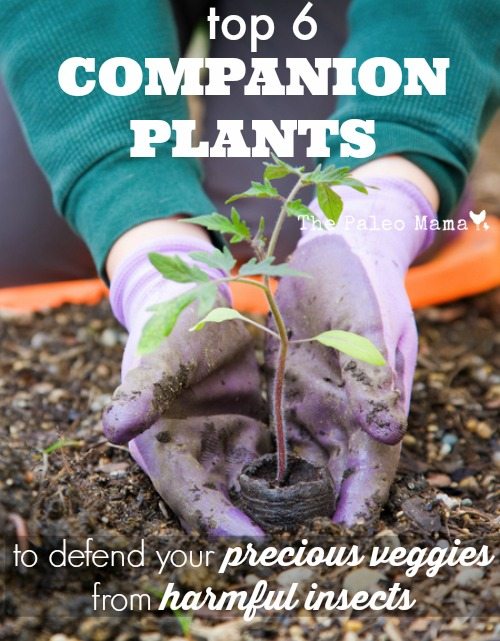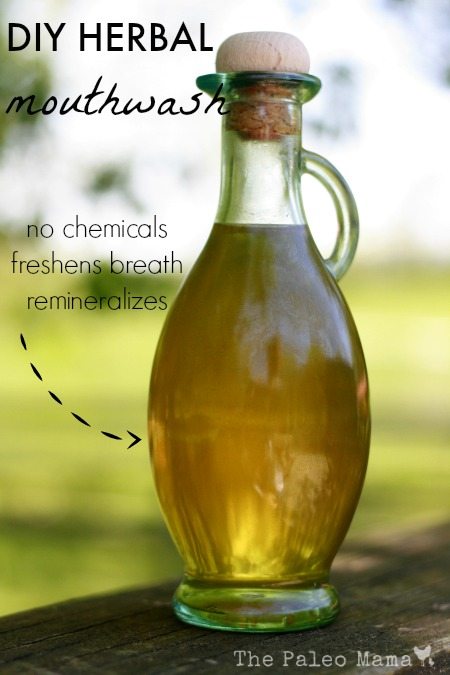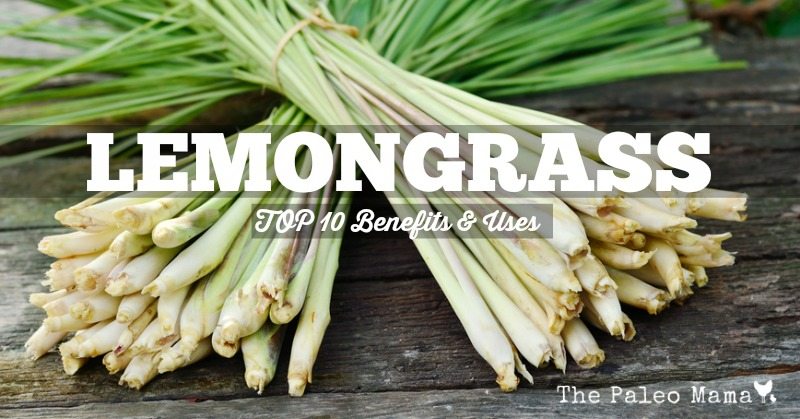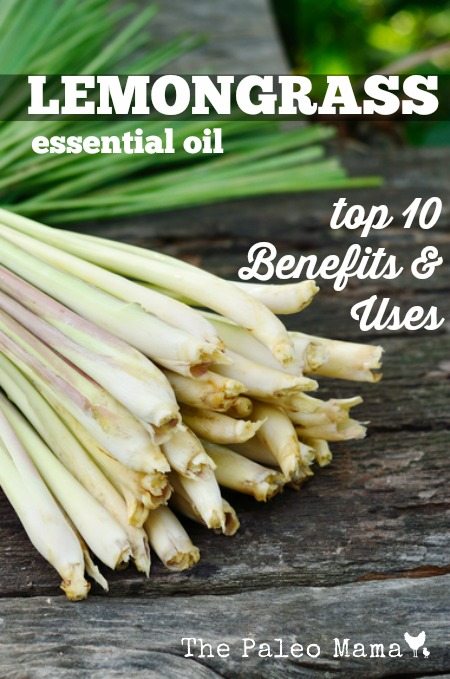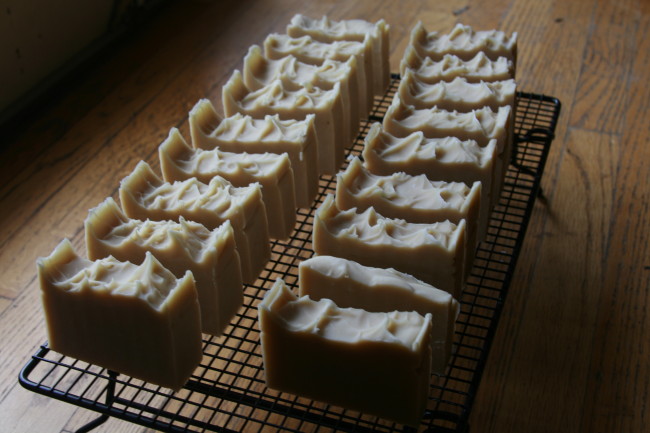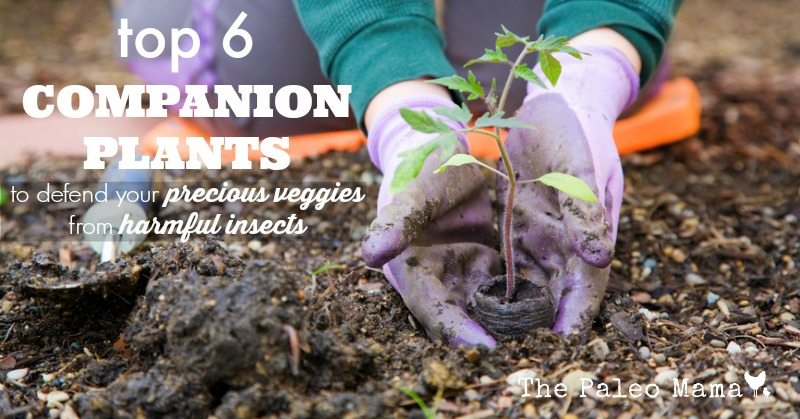
Today I welcome Sally from Garden Valley Homestead to the blog! I’m so excited to share this wonderful post she wrote on the top 6 companion plants to defend your precious veggies from harmful insects.
Everyone needs a friend, someone to look out for us, keep us safe. We’re stronger together, right? Plants need best-buddies, too, a pal to protect them from harmful insects. Some plants make great companions, but some are mighty Super Heroes that not only protect their friends, but also make them stronger and better (more flavorful). Plants are designed to live and work together. When you know which plants live and work well together–who looks after whom–your gardening work is so much easier, and your plants will thrive–while you sit back, then reap the harvest!
Top 6 Companion Plants to Defend Your Precious Veggies From Harmful Insects:
There are many excellent companion plants growing on this green earth, but this post zeroes-in on a handful of great ones–Super Heros– that can live happily in just about any garden. The plants that made the Top 6 List were selected because they are:
- Easy to find
- Easy to grow
- Easy to eat
- Repel insects from a range of commonly grown vegetables, including tomatoes, cabbage, beans, potatoes
- Worthy of being called Super Heros
Plant List:
#6 BORAGE

Borage is a friend to MANY plants, especially tomatoes and squash. But, Borage and strawberries are absolute Besties! Savvy strawberry farmers always set a few plants in their beds to enhance the fruits flavor and yield. Borage’s Super Powers are its knack for repelling tomato hornworms and cabbage worms, attracting bees and wasps, as well as adding trace minerals to the soil. Borage leaves contain vitamin C and are rich in calcium, potassium and mineral salts. It also makes a nice mulch for most plants. Borage is self-sowing, so after planting this annual once, it will reseed itself. Borage flowers are beautifully vibrant and edible. The plant itself is furry and gangly, and not edible. This is why is ranks 5th among five super defenders.
Borage grows in zones 5-10
#5 CHIVES
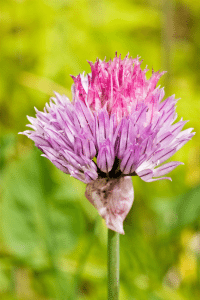
Chives buddy-up well with carrots, tomatoes, broccoli, cabbage, eggplant, kohlrabi, peppers, potatoes, rhubarb, strawberries, mustard–and apples! Chives’ super power is defending tomatoes from aphids and repelling Japanese beetles and carrot rust flies from your garden. Planting chives consistently for three years amongst apple trees prevents scab disease. That’s a big deal! Apple scab can ruin a season’s crop. Pair Chives with carrots and tomatoes to enhance their flavor. It holds fourth place because it doesn’t get along well with asparagus, beans, peas, and spinach.
Chives grow in ALL hardiness zones.
Word of warning: It’s not recommended to plant Chive with asparagus, beans, peas and spinach.
#4 RADISH
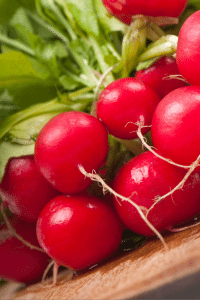
Radishes are trustworthy companions to many plants–and they’re easy to grow. Plant radishes along side beets, bush beans, pole beans, carrots, chervil, cucumber, lettuce, melons, nasturtium, parsnip, peas, spinach to protect them from cucumber beetles and rust flies. Radishes draw strength and flavor from Chervil and nasturtium, so think about planting a little of each to give your radishes a boost.
To defend your corn crop against borers (ugh!), plant radish with your corn, but let it go to seed for its protective power to work.
If you don’t mind planting a few sacrificial radish, plant a few with your spinach to lure leafminers from your spinach plants. The leafminers will damage the radish leaves, but not the edible root.
Radish’s super power lies in its uncanny ability to tell you something about your soil, like if the calcium levels are off. If your radish grows to produce a stringy root, your soil needs calcium.
Word of warning: Keep radishes away from hyssop plants, cabbage, cauliflower, Brussels sprouts and turnips.
Radish grow in ALL hardiness zones.
#3 ONION
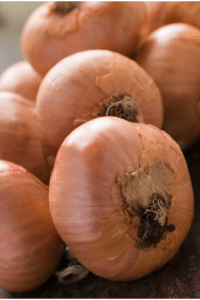
If you’re looking forward to growing any of these vegetables this season–Broccoli, Brussels Sprouts, Cauliflower,Cabbage, Collards, Chard, dill, Kale, Kohlrabi, Mustard, Radishes, Rutabaga, tomato, Turnip–send in the onions! The onion’s super power is its strong smell which confuses carrot and onion flies and repels maggots away from carrots, lettuce, chamomile, beets, cabbage, and parsnips.
Grows in all zones, depending upon the variety.
Word of warning: Keep onions away from peas and asparagus.
#2 MARIGOLD (CALENDULA)

Even though this number 2 Guardian Plant, marigold (Pot Marigold) isn’t a vegetable, it is edible…and beautiful…and easy to grow. Botanically known as Calendula , ( ca·len·du·la \kə-ˈlen-jə-lə, -dyu̇-lə\), it is a might adversary of any insect that dares to enter the garden. French marigolds repel whiteflies and kill bad nematodes. Mexican marigolds are said to “bug” many destructive insects. Scented varieties of marigold flowers are the best pest deterrents. One of Calendula’s super powers is its ability to be self-reliant. But, give it a little care and it will perpetually bloom in your garden.
Grows in ALL hardiness zones.
Word of warning: While calendula drives away many foes, it also attracts spider mites (there’s a plant for that!) and snails.
#1 GARLIC:
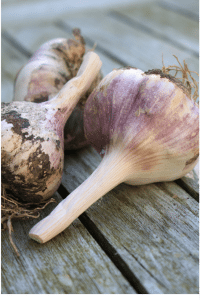
Yes, garlic! It ranks Number #1 Super Hero Defender of Good (plants) on this list of Super Hero insect-fighting plants because its powerful ability to defend fruit trees!
Garlic is the perfect, yet stealthy, partner for apple, peach and pear orchards, or wherever borers are a problem. Garlic’s super power is its ability to accumulate sulfur, which acts as a naturally occurring fungicide. Garlic’s companion plants take-up take up the sulfur through their roots (how to make a soil drench) and pores. Garlic’s status as Super Guardian Defender stem from its ability to ward-off codling moths, Japanese beetles, root maggots, snails, and carrot root fly. Go ahead and plant garlic under peach trees to help repel borers.
Garlic is one plant you should plant throughout your garden beds. Plant garlic along side your tomatoes to prevent red spider mites (link to calendula) from moving in. Diamond back moths won’t bother your cabbage when garlic is standing guard.
Bonus: Aphids won’t give your roses a second thought once they realize garlic is on duty.
Word of warning: Garlic is fickle around peas.
Gardening is so much simpler–and rewarding, when you let the plants do the work for you. Now you know which plants which protect your crops from invaders is half the battle. It’s time to dig in and starting growing a strong, healthy crop of produce for your family.
RESOURCES:
- Companion Planting https://www.ghorganics.com/page2.html
- Gardening with Borage: https://gardening.about.com/od/herbsspecificplants1/p/Borage.htm
- Wikipedia: https://en.wikipedia.org/wiki/List_of_pest-repelling_plants
- Harvest to Table: https://www.harvesttotable.com/2009/04/insect-deterrent_plants/
- Pallen Smith: https://www.pallensmith.com/articles/pest-control-plants
- Do It Yourself: https://www.doityourself.com/stry/using-garlic-as-a-natural-pesticide#b
- The Flower Expert: https://www.theflowerexpert.com/content/growingflowers/growingflowers/growing-marigolds
ABOUT THE AUTHOR:
Sally Olson is a wife, mother, writer/blogger, and redeemed fake Ficus tree owner. She blogs at Garden Valley Homestead where she helps reluctant gardeners trade in brown thumbs for fresh greens. Sally, her husband of 26 years, two sons, horses, Labrador Retrievers, and hens are blessed to call the Sierra-Nevada Foothills home. For more nourishing garden time-saver tips, follow Sally at https://www.gardenvalleyhomestead.com and on Pinterest, pinterest.com/GVHomestead/
